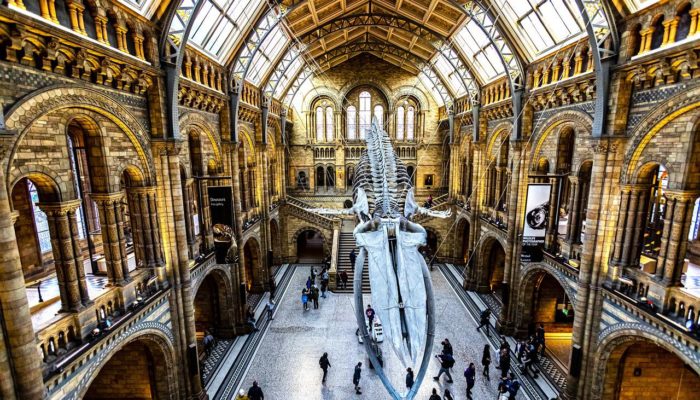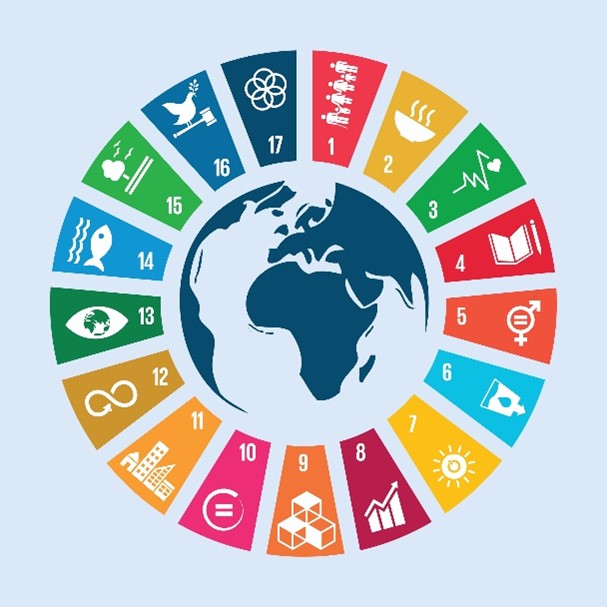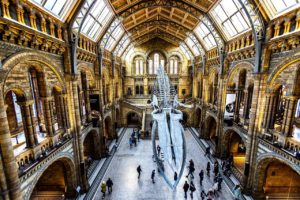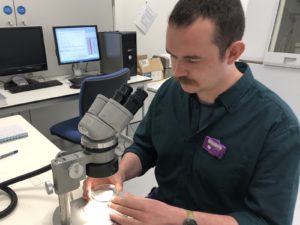
GMPV and The Sustainable Development Goals
In 2015 all United Nations Member States adopted a set of Global Goals, as a universal call to protect our planet, end poverty and ensure that all people can enjoy peace and prosperity. These are called the Sustainable Development Goals – 17 integrated goals aimed at addressing the challenges our society is currently facing considering social, economic, and environmental sustainability.
From decarbonization, to disaster risk reduction and natural resources, geoscience and geoscientists can play a key role in achieving these goals. This blog series will explore how geoscientists, and in particular Geochemists, Mineralogists, Petrologists and Volcanologists, fit into this framework.
Previous blog posts in the series focussed on mineral resources and sustainable mining, geothermal energy, carbon capture and storage, and volcanic hazards. This blog will look at the role of museums and heritage, guided by our conversation with Dr. Bob Gooday – Geological Analyst for National Museums Scotland.
Museums and Sustainable Development
Sustainable Development was initially defined by the UN as “development that meets the needs of the present without compromising the ability of future generations to meet their own needs”. Over time, this concept has further developed, moving towards seeking a balance of the social, economic and environmental dimensions, linking people, communities and societies with our natural world.
In 2015, UNESCO highlighted the role of Museums in Sustainable Development by releasing a publication titled “Recommendation concerning the Protection and Promotion of Museums and Collections, their Diversity and their Role in Society”. This document stated that “Museums are not merely places where our common heritage is preserved – they are key spaces of education, inspiration and dialogue. They play an essential role in social cohesion and sharing collective references. They hold up a mirror to society, introduce visitors to alternative visions of the world and they provide opportunities to foster creativity, imagination and respect for self and others.” (UNESCO).
The recommendation focused on the protection and promotion of cultural and natural diversity, on the role of museums as spaces for cultural transmission, dialogue and learning, as well as the importance of the preservation of museum collections to protect heritage, cultural diversity and scientific knowledge.
Sure enough, many museums highlight these important aspects as part of their missions and visions. The National Museum of Scotland’s vision is “Inspiring people, connecting Scotland to the world, and the world to Scotland”. The Natural History Museum’s mission is to “create advocates for the planet” with a vision “of a future where both people and planet thrive”.
From protecting natural collections and enabling research, to supporting cultural and educational participation for all, Museums and Heritage sites have a central role to play in Sustainable Development.
So how can geoscientists help?
Dr. Bob Gooday’s research focussed on the volcanic system in Arran, an island off the west coast of Scotland. This included a range of geological techniques, from mapping and sedimentary logging to petrography and geochemical analysis. To put his work into context, Bob had to look into the geology and geochemistry of related rocks all over Scotland which got him interested in the large-scale geological patterns in Scotland’s rocks.
After his PhD, Dr. Gooday went back to Arran to help set up the Arran Geopark and “get the public excited about the amazing geology on the island”.
The Arran Geopark is an Aspiring UNESCO Global Geopark, and is currently working towards achieving accreditation from UNESCO
Currently, there are 177 UNESCO Global Geoparks in 46 countries (UNESCO Global Geoparks). Geoparks are areas where important geological sites and landscapes are managed to provide protection, education and sustainable development. The interplay between geological and cultural heritage in Geoparks creates awareness of the key issues our Societies are facing – from climate change to natural hazards and sustainable use of natural resources. In Bob’s words: “Geoparks are a great way of connecting local communities and visitors to the geology and a landscape of an area. Arran is a popular tourist destination with outstanding geological heritage and easily accessible sites, so it is the ideal area for building these connections.”
“I loved the outreach and engagement side of geology, but I missed the more scientific research aspect. Museums occupy a wonderful space between public engagement and active research. National Museums Scotland were looking for a geological analyst, and the experience I had built up over my PhD and from working in Arran fit really well. “
“The most important transferable skills were definitely geological lab techniques. I had done a lot of sawing, grinding, polishing etc. of my PhD samples, and used a variety of analytical techniques, so I had a good understanding of what information could be extracted from certain samples, what instruments to use, and what these things might tell us.”
Talking about the transition from academia to working with museums, Bob says: “The biggest hurdle I encountered in the museum world was the attitude towards sampling and destructive techniques. In geology, we get so much of our information from cut or polished surfaces and powdered material. But of course when dealing with museum objects (mineral specimens, carved stone objects, etc.) you can’t just cut a bit off with a diamond saw and crush it up. Getting around these challenges is one of the most interesting parts of my learning experience.”
Great challenges and opportunities
Asking about the role that GMPV researchers can play in Museums and Heritage, Bob tells us: “Areas like petrology and mineralogy always need samples to work on, and it won’t always be necessary to conduct fieldwork (which can be expensive, time-consuming, or inaccessible for many people) if the specimens you’re interested in have already been collected! Please get in touch with a museum (local, or in the place you’re studying) and see if their geological collections or facilities can be of any use to your research.
As scientific collections, we’re always looking out for specimens involved in novel and interesting research. Rather than going into an un-labelled box in the basement of the geology department (I know every university has a storage room like this), these specimens could be so valuable if properly catalogued, cared for, and made available by museums. Please consider donating research material to museums once it has been analysed – who knows what exciting science it could be used for in the future!”
“As with every field, funding will always be a struggle for scientific collections. For me, one of the most important things for museums is to be a visibly active part of the research community. Palaeontology researchers are great at doing collaborative work between universities and museums, and there’s no reason the GMPV community can’t do the same.”
Museums are a fantastic resource that all scientists can and should use, and every research output that includes scientific collections is incredibly useful for us to show how important museums are.



